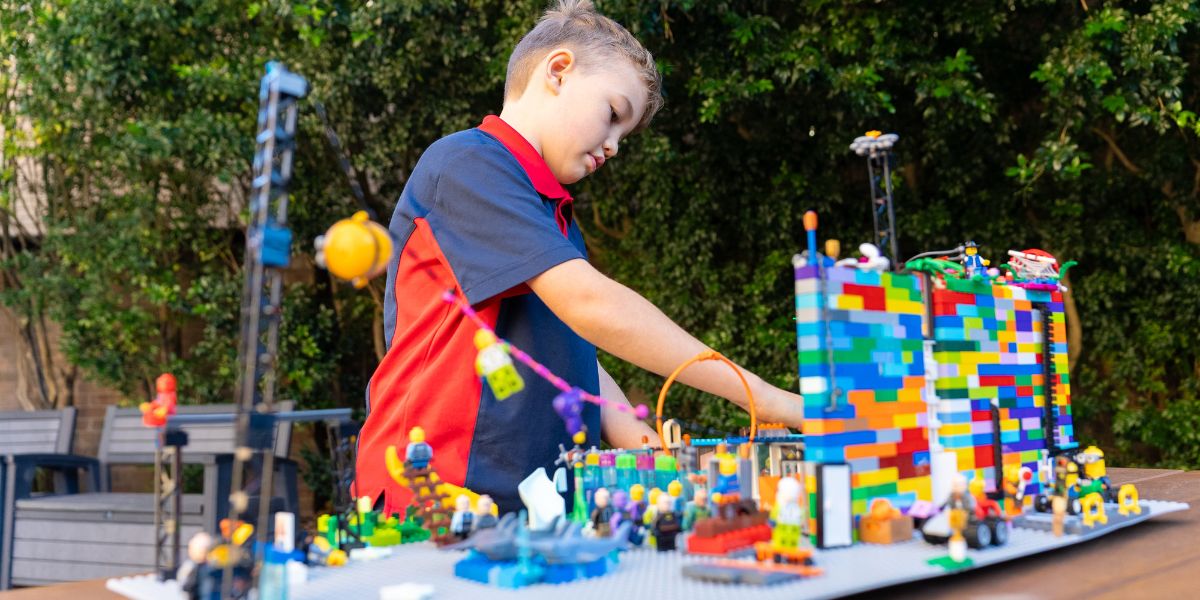Australian cities and towns are facing a growing challenge: a lack of safe, accessible play spaces for children and families. A new study has highlighted how urban environments are falling short in meeting the needs of kids, leading to fewer opportunities for outdoor play and community connection.
Today is World Play Da, the LEGO Group’s annual celebration aligned with the UN’s International Day of Play, and they’ve released a report that shines a spotlight on the importance of creating family-friendly spaces that inspire creativity, play, and connection.
LEGO’s research shows something pretty alarming, our cities in Australia aren’t designed with kids in mind. Here’s what parents are saying:
- 81% feel their city doesn’t prioritise play in urban planning.
- 62% say safe, accessible play spaces are lacking.
- And 21% are worried their kids are growing up without enough outdoor fun.
Kids feel it too!
- 65% think their cities need more fun, engaging places to play.
- 42% notice city streets focus more on cars than people, leaving fewer safe spaces for them.
Even worse, 15% of parents are cutting back on other expenses just to afford safe play options.
But here’s the good news, when kids do get to play, it’s life-changing as 85% of kids say play makes them happier and more optimistic. 90% feel it helps them bond with family and friends and 96% of parents agree, play builds key skills like sharing and emotional development, which are so important for school and beyond.
Troy Taylor, Vice President and General Manager of LEGO Australia and New Zealand, said:
“Our mission at the LEGO Group is to inspire and develop the builders of tomorrow. Kids bring fresh, creative solutions to real-world problems, and we believe they should have a voice in shaping the future of their communities. This World Play Day, let’s embrace their creativity and work together to build a brighter, more playful future for the next generation.”
Let’s start rethinking cities as places where kids can thrive!
When asked to imagine their ideal cities, kids had bold and creative ideas for making urban spaces more playful, such as:
- Giant board games and obstacle courses for families to enjoy together.
- Playable fountains and water features.
- Outdoor areas with glowing pathways or colorful lights at night.
- Spaces for building, creating, or exploring art.
- Interactive walls or murals that can be touched, climbed, or changed.
- Skate parks, bike tracks, and sensory gardens.
These imaginative concepts highlight the untapped potential of designing cities with children in mind.
Join LEGO’s Mission to Build Playful Communities
This World Play Day, the LEGO Group invites Australian families to share their ideas for creating more playful cities using #LEGOWorldPlayDay and #BuildTheChange. By harnessing the creativity of children and reimagine our urban environments to foster stronger communities and happier families.
Natalia Krysiak, Architect and Founder of Cities for Play, says:
“The LEGO Group’s findings are a powerful reminder to prioritize children and families in urban planning. Play shouldn’t just happen in designated playgrounds; it should be woven into the fabric of everyday life, on school routes, in shopping areas, and throughout our cities. Let’s design urban spaces that ignite imagination, foster social connections, and make room for creativity.”
Why Safe Play Spaces Matter More Than Ever
As urbanization continues, it’s vital for community leaders and urban planners to prioritize play in their strategies. By co-designing with children and families, we can build cities that encourage exploration, creativity, and connection, ensuring that play becomes an integral part of daily life.









